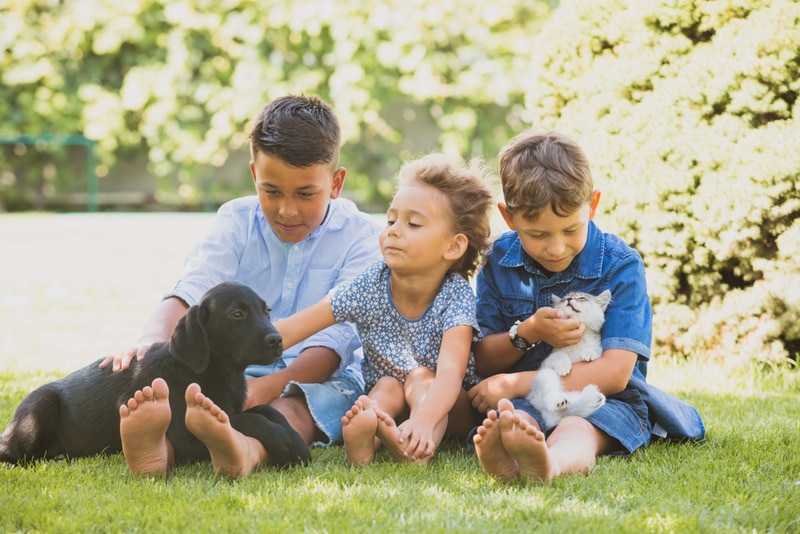Kitten Development in the First 12 Months: Vet-Approved Feline Growth Info
Updated on
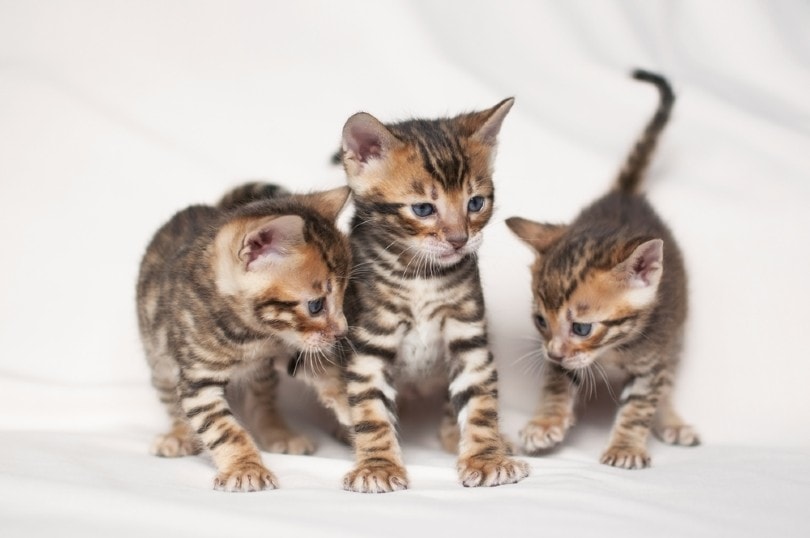
Is there anything more adorable than a baby animal? In this category, kittens are champions. What is most fascinating is that these vulnerable little furballs that can fit in the palm of your hand will grow into full-fledged adult cats in just 12 months. The most significant changes will occur during just the first 8 weeks!
Read on to find out what happens at every stage of a kitten’s journey to adulthood, so you’re better equipped to provide the best care and nutrition during this critical period.
Development of Kittens in the First 12 Months
1. Birth to 2 Weeks
The first days of a kitten’s life—particularly, their first 48 hours—are the most critical because this is when they are most fragile.
Newborn kittens have a very low level of antibodies in their blood and an undeveloped immune system, which makes them extremely vulnerable to external pathogens. Fortunately, just after their birth, their mother transmits antibodies to them through colostrum, a milk rich in these precious proteins and growth hormones. For kittens, this milk is not only the first thing that they swallow but also the most important, as it helps strengthen their immune system and protects them from serious infections during their first weeks of life.
Furthermore, kittens are born blind and deaf and rely almost entirely on their sense of touch and smell to find their mother’s milk. They spend most of their time sleeping and suckling. Newborn kittens are practically helpless and completely dependent on their mother’s care and nutrition to survive.
They are not able to maintain their body temperature, and their mother will groom them regularly throughout the day, to stimulate urination and defecation.
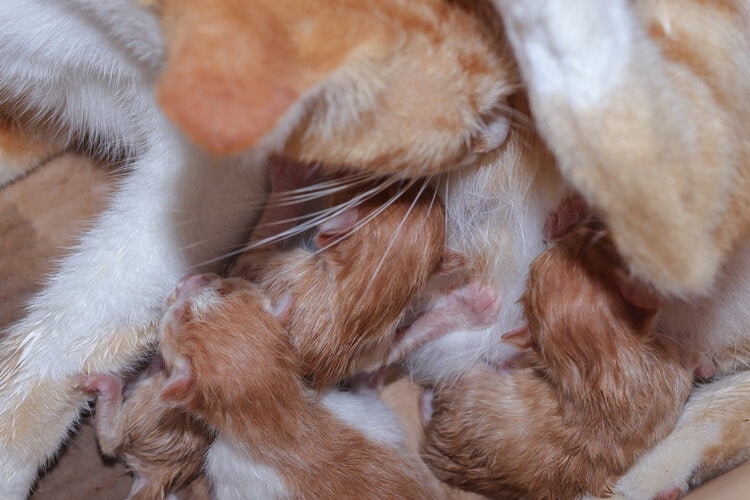
2. 2 to 3 Weeks
At this point, kittens begin to open their eyes and their ears begin to function. However, their vision is quite weak, and they cannot see far. Their ears will fully unfold and straighten on their heads by the 14th day. Their vocalizations diversify, changing from little squeaks to a whole range of meows. Their hearing continues to develop for another few weeks. The kittens are also more coordinated and will begin to crawl and explore their surroundings. This is the time to speak to your vet about the regular worming schedule for your kitten.
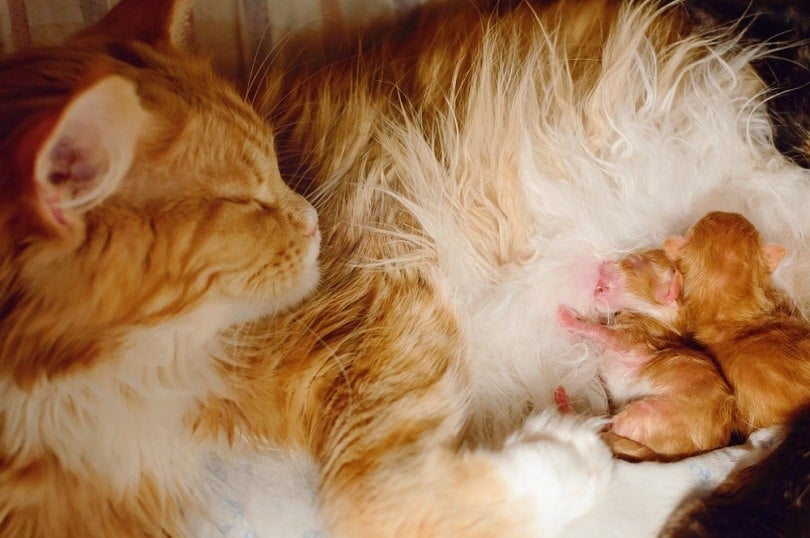
3. 3 to 4 Weeks
From about 3 weeks old, kittens will attempt to stand on their feet, but they are still wobbly and clumsy.
Their eyes are wide open, though, and their ears prick up and their senses begin to sharpen, enabling them to start perceiving the world around them. Interactions with their mother and littermates become more numerous and varied.
This is also when kittens learn different ways of expressing themselves. They will begin to purr and make little hisses, although purring may be present from as early as the first week of life. In addition, their first milk teeth start to appear. Their mother will stop stimulating them for urination and defecation, and they will start doing it on their own.
At this stage, you can start offering pate and wet food, to slowly begin the weaning process.
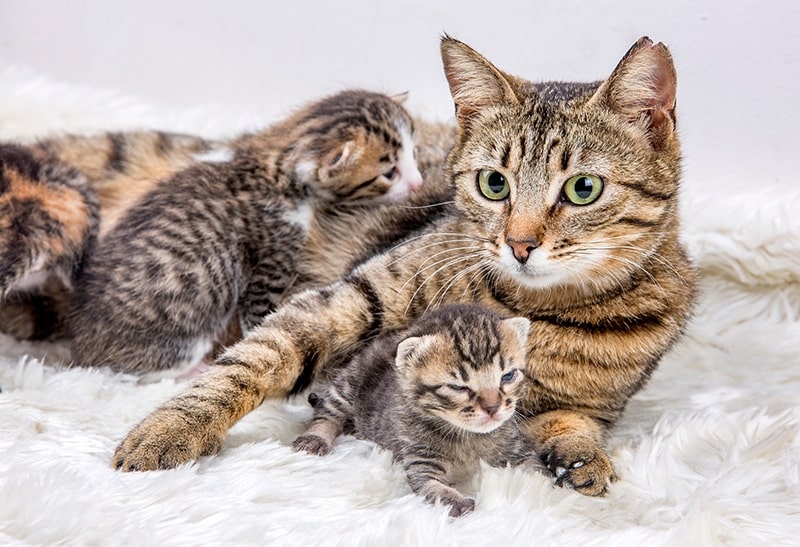
4. 4 to 6 Weeks
At 4 weeks, kittens have better vision, hearing, and coordination, enabling them to explore their surroundings with more confidence. Their teeth continue to grow, while their claws are now retractable. With their enhanced senses, the kittens are more sensitive to sights and sounds in their environment.
It is also from the fourth week that kittens start to fine-tune their grooming skills and can begin to use a litter box. They are also able to thermoregulate from 4 weeks of age.
Continue offering wet food, and introduce dry food as the weaning process continues.
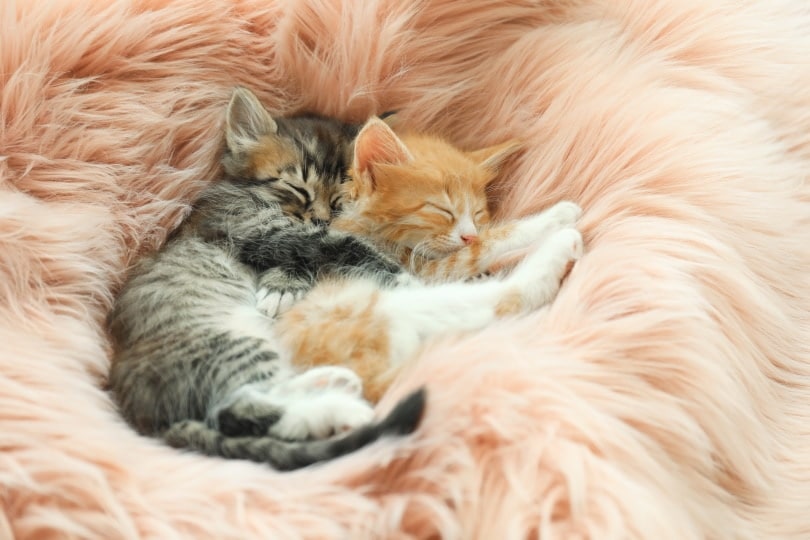
5. 6 to 8 Weeks
By the time the kittens reach 6 weeks of age, most are near experts in using the litter box. They are also more agile and confident and will even begin to hunt imaginary prey.
From 6 to 8 weeks, the little felines become more active and playful. They begin to play with toys and interact more with their littermates. At this age, most kittens are fully weaned from their mother’s milk.
Note: Once they turn 6 weeks of age, kittens usually receive their first core vaccine (FVRCP), to protect them against three highly contagious viral disease in cats: feline rhinotracheitis caused by feline herpesvirus, feline calicivirus, and feline panleukopenia due to feline parvovirus.
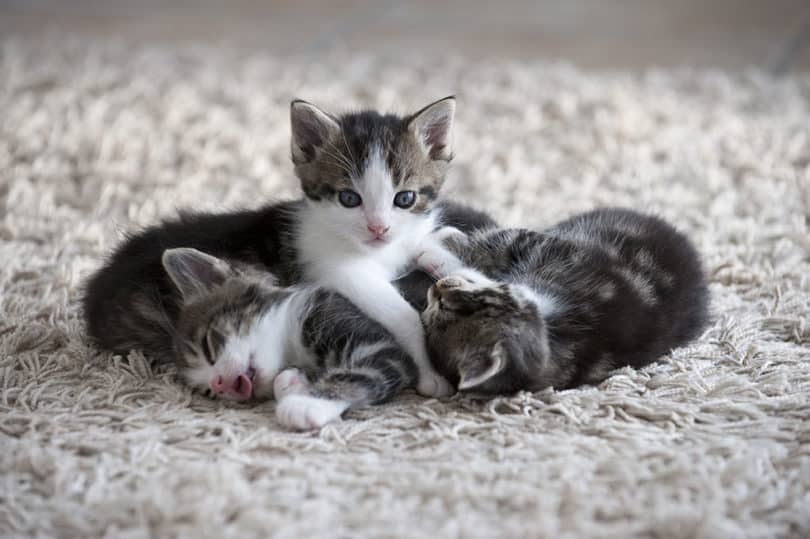
6. 8 to 12 Weeks
Kittens continue to grow and develop their coordination and balance. They are increasingly energetic and independent. All their baby teeth have fully grown, and in most cases their eyes now have their final color, but may still not reach their ultimate shade for a few weeks.
The kittens also begin to learn social skills and boundaries from interactions with their littermates and the humans caring for them.
Note: Ideally, kittens should stay with their mother until they are at least 8 weeks old. That said, in some cases it may be advisable to wait even longer (around 10 weeks of age or more) before separating kittens from their moms, based on their breed size.
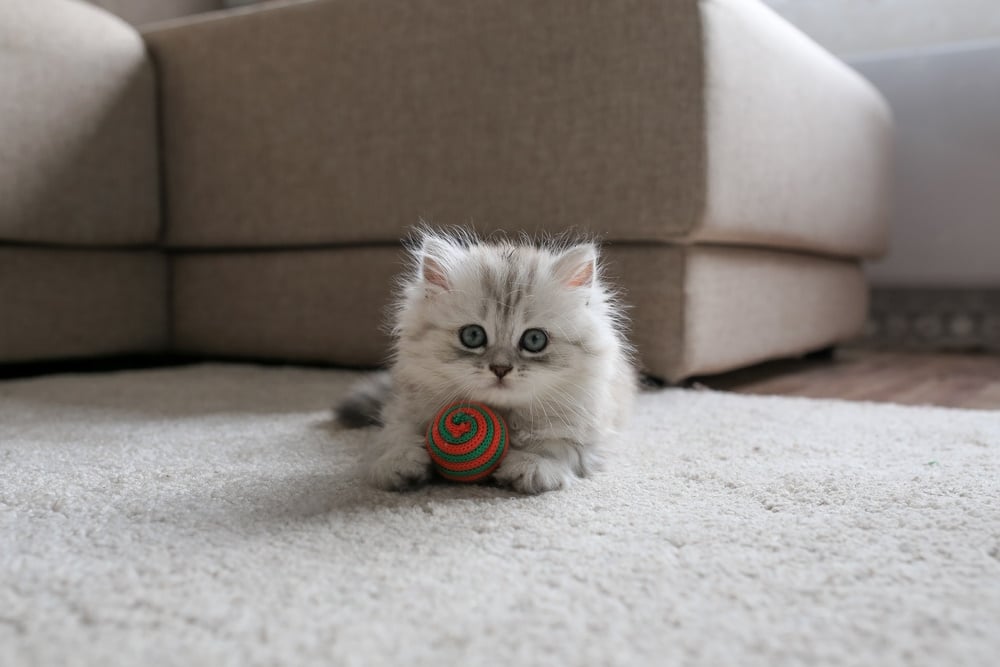
7. 3 to 6 Months (Juvenile Period)
During this time kittens experience a growth spurt. Most become mischievous, full of energy, playful, and more independent. Keep an eye out for them during this time, as they can easily get in trouble!
The kittens also begin to show signs of sexual behavior—such as heat and territory marking—and can be neutered or spayed at around 4 to 6 months of age, depending on the individual cat and their circumstances. Speak to your veterinarian about the ideal time to get your kitten neutered or spayed.

8. 6 to 12 Months (Adolescence)
At 6 months, most kittens have all their adult teeth. They will be eating age and size appropriate kitten food, wet and dry.
They have also mastered every muscle in their body, so they can run, jump, and play with that typical feline grace and agility. Due to regular playing time during the previous months, they have been able to develop their muscles, reflexes, and improve their natural hunting instincts.
The growth of the kittens is not over yet, though. This is where the gap between small and large breeds widens; while small breeds are almost done growing, large breeds (like Maine Coons) need more time to reach maturity and transform into gorgeous, full-fledged adult cats.
The ideal cat bowl will be there with your kitten as they grow and last them well into adulthood, which is why our Hepper NomNom Cat Bowl was designed to cater specifically to the needs of our feline companions at any age. The stainless steel, shallow bowls are the perfect depth for kittens who would otherwise struggle to reach the bottom of traditional bowls and offer whisker support for future feedings as they mature. Invest in something as practical and fun as your kitty - our Hepper NomNom Cat Bowl.
At What Age Do Kittens Become Adults?
Kittens are considered adults when their growth is complete, i.e., when they are mature physically and mentally.
From a physical point of view, this is when most kittens have reached their final size, but for some breeds this may take a little bit longer. In terms of temperament and personality, adult cats that have been properly socialized will comfortably interact with their feline counterparts, human relatives, and other people in their environment. They are no longer in an active learning phase, but they will still be learning new skills through exposure to various experiences and circumstances.
Therefore, adulthood is, on average, around 12 to 18 months, but there can be significant differences from one breed to another.
Either way, by their second birthday, all kittens will have fully matured into their adult personas, regardless of breed.
Final Thoughts
Watching your kitten grow from a tiny newborn to an adult cat is a memorable and fascinating process. Between birth and adulthood, your kitten will go through many stages of development. The physical changes will be very rapid during the first weeks, then gradually slow down until they are 1 to 2 years old, with the exact age depending on their breed.
Knowing what to expect at each stage of your precious kitten’s development will help you get them off to a good start in life.
Featured Image Credit By: Kutikova Ekaterina, Shuterstock





